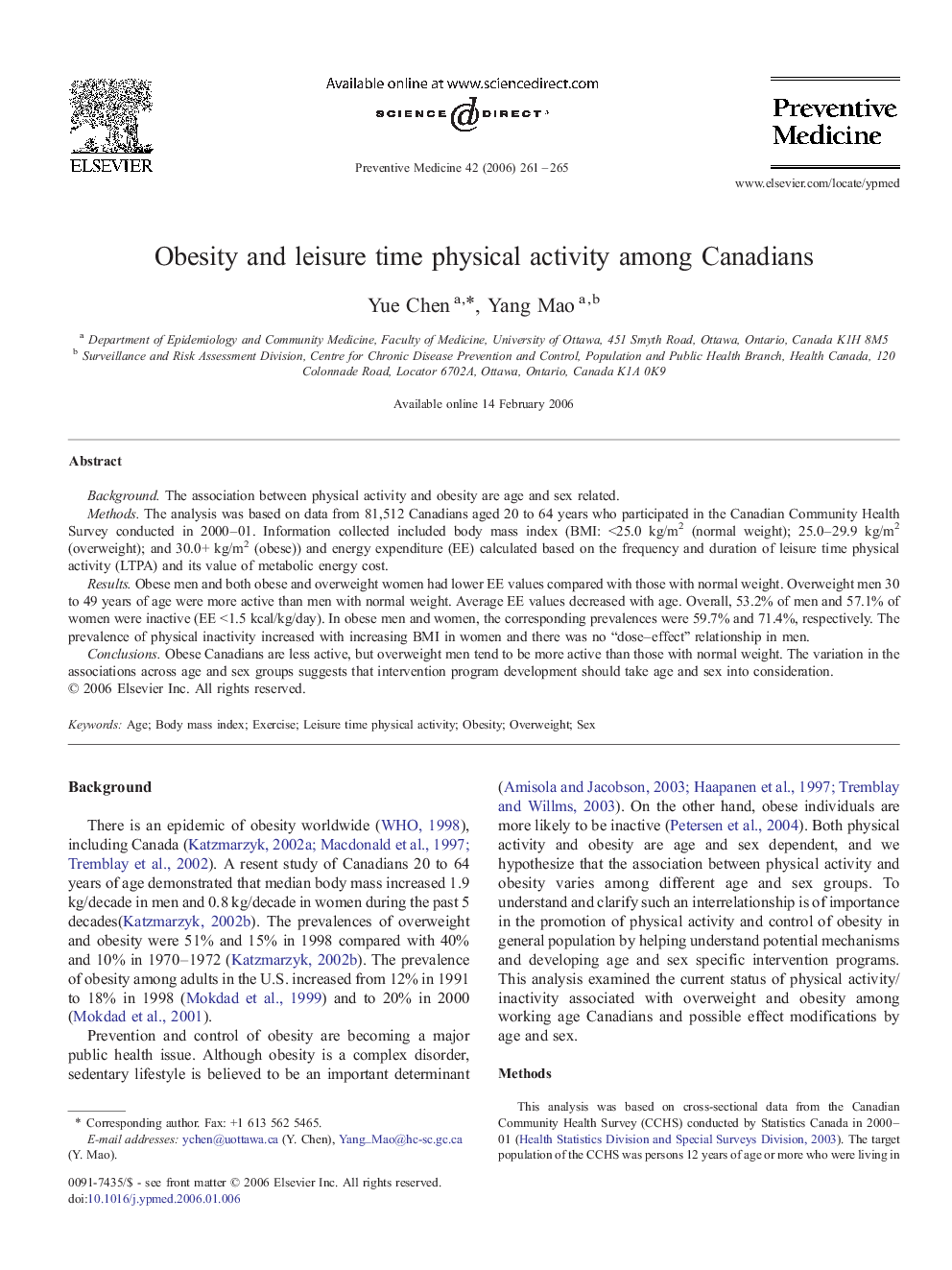| Article ID | Journal | Published Year | Pages | File Type |
|---|---|---|---|---|
| 3102180 | Preventive Medicine | 2006 | 5 Pages |
Background.The association between physical activity and obesity are age and sex related.Methods.The analysis was based on data from 81,512 Canadians aged 20 to 64 years who participated in the Canadian Community Health Survey conducted in 2000–01. Information collected included body mass index (BMI: <25.0 kg/m2 (normal weight); 25.0–29.9 kg/m2 (overweight); and 30.0+ kg/m2 (obese)) and energy expenditure (EE) calculated based on the frequency and duration of leisure time physical activity (LTPA) and its value of metabolic energy cost.Results.Obese men and both obese and overweight women had lower EE values compared with those with normal weight. Overweight men 30 to 49 years of age were more active than men with normal weight. Average EE values decreased with age. Overall, 53.2% of men and 57.1% of women were inactive (EE <1.5 kcal/kg/day). In obese men and women, the corresponding prevalences were 59.7% and 71.4%, respectively. The prevalence of physical inactivity increased with increasing BMI in women and there was no “dose–effect” relationship in men.Conclusions.Obese Canadians are less active, but overweight men tend to be more active than those with normal weight. The variation in the associations across age and sex groups suggests that intervention program development should take age and sex into consideration.
